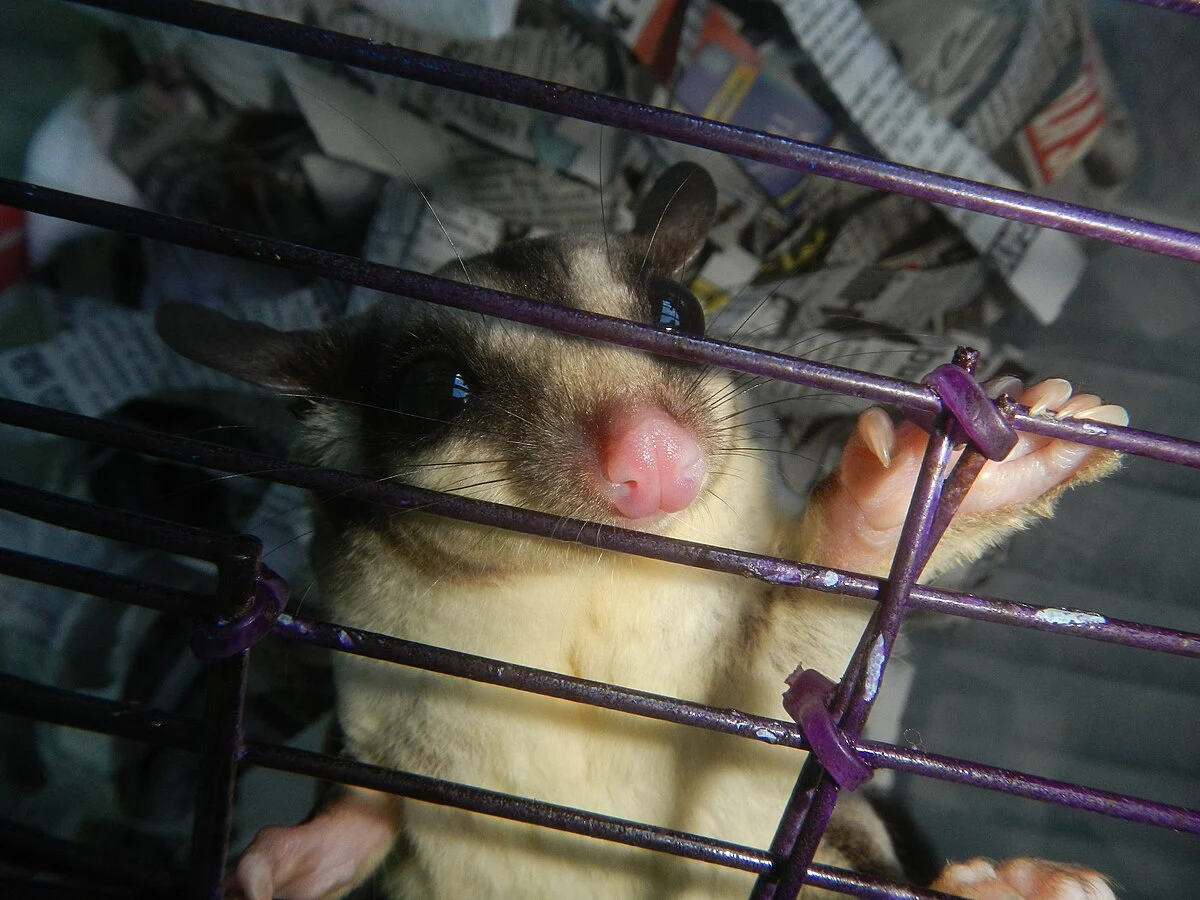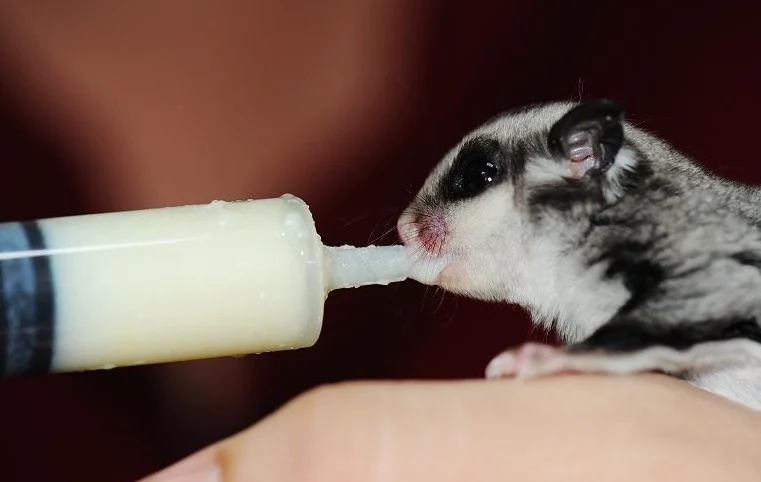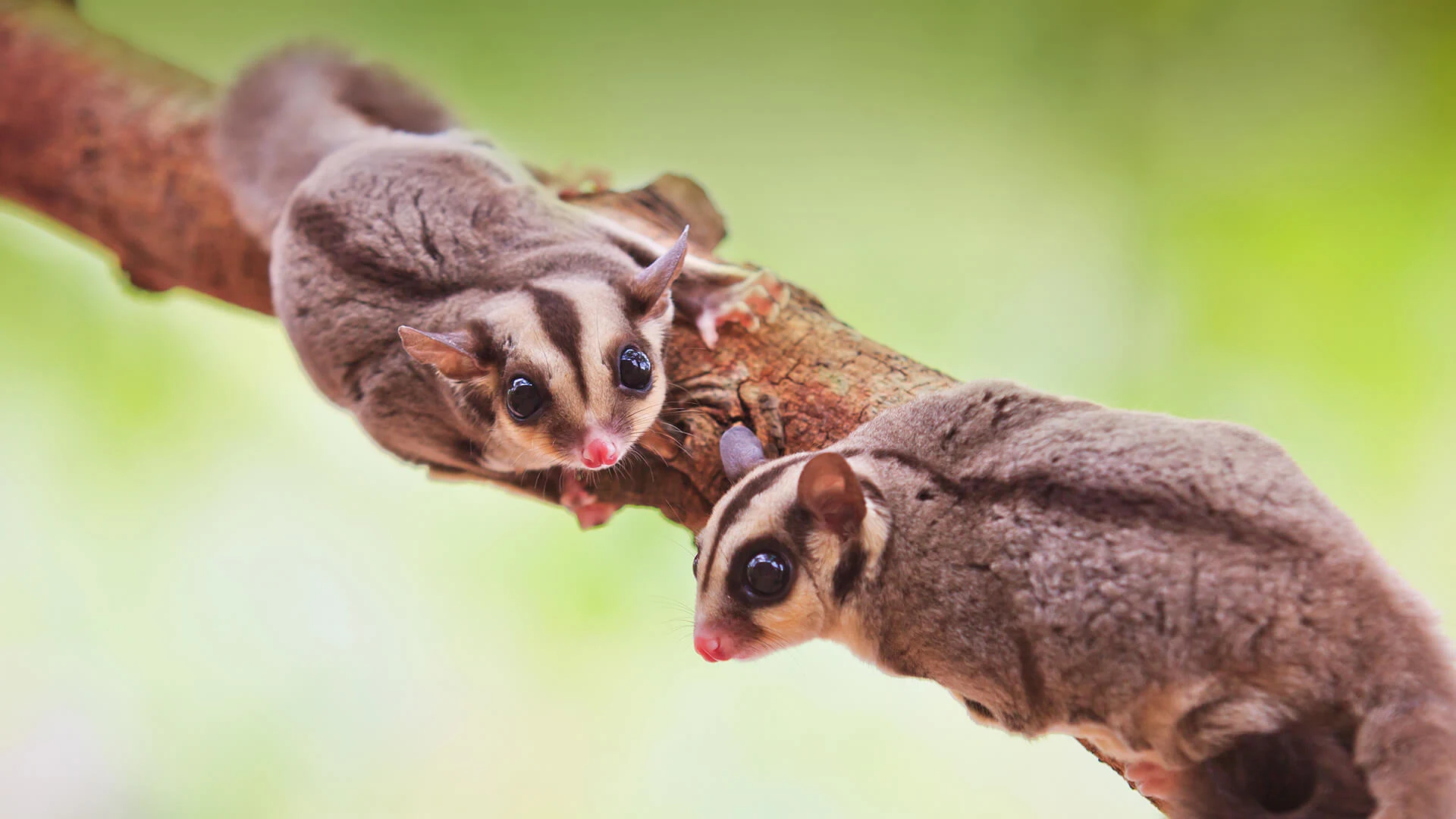Before we dive into what a sugar glider colony is, we need to familiarize ourselves with what a sugar glider is. Sugar gliders (Petaurus breviceps) are small, nocturnal marsupials that are known for their unique ability to glide through the air and their really good social nature. Because of this ability to quickly bond with their owners, their popularity have skyrocketed among pet owners and enthusiasts. But have you ever wondered how these fascinating animals live together in the wild? Understanding their social structure and behavior is important for anyone who wants to keep them as pets.
So, what is a sugar glider colony?

A sugar glider colony is a group of sugar gliders living together in a social structure. These colonies can range in size from just a few individuals to more than 30 members. The social structure of a sugar glider colony typically consists of:
- Alpha male(s): One or more dominant males who lead the colony and have primary access to females for breeding.
- Other males: Subordinate males who may also breed with females, but usually have less access than the alpha males.
- Females: Adult females who breed and care for the offspring.
How Sugar Gliders Behave In Their Colonies
Wherever they find themselves, sugar gliders form tight-knit colonies that play a crucial role in their survival and overall well-being. Let us now examine the various aspects of their colonies:
Social Interactions
Sugar gliders are highly social animals that rely on their colony members for various aspects of their lives. They groom each other, play together, and share sleeping quarters. Grooming is an essential part of their social interactions, as it helps them maintain hygiene and strengthen social bonds.
Communication
Sugar gliders communicate with each other using a range of vocalizations, scents, and body language. They produce different sounds to convey specific messages, such as warning calls, mating calls, and distress calls. They also use scent glands to mark their territory and communicate their social status within the colony.
Mating and Reproduction
Breeding typically occurs once or twice a year, depending on the availability of food and other resources. The dominant alpha male(s) usually have the first opportunity to mate with the females in the colony. After a gestation period of about 16 days, the female gives birth to one or two underdeveloped joeys, which then crawl into her pouch to continue their development. The joeys remain in the pouch for about 70 days before emerging to explore their surroundings.
Parenting and Offspring Care
Both parents play a role in caring for the offspring. The mother provides milk for the joeys, while the father helps protect and groom them. As the joeys grow older, they learn essential skills from their parents and other colony members, such as foraging for food and gliding.
Colony Life in the Wild vs. Captivity

In the wild, sugar gliders inhabit forests and woodlands, where they spend most of their time in the trees. They live in tree hollows or nests made of leaves and bark. In captivity, sugar gliders can still form colonies, but their social structure and behavior may differ from those in the wild. For example, captive sugar gliders may have more frequent breeding cycles due to the constant availability of food and closeness of living in the same house.
Social Structure
In the wild, sugar glider colonies typically consist of a dominant alpha male, subordinate males, and adult females. The alpha male holds the highest social rank within the colony. The colony members cooperate with each other for various tasks, such as foraging, grooming, and caring for offspring.
In captivity, the social structure of sugar glider colonies can be more flexible, as human intervention can influence the composition of the group. For example, pet owners may choose to keep only same-sex pairs or groups to prevent breeding. Also, their social hierarchy in captive colonies may be less pronounced, as resources such as food and nesting sites are readily available, thus reducing competition among the colony members.
Diet
The diet of wild sugar gliders mainly consists of nectar, fruit, insects, and tree sap. They are opportunistic feeders, and their diet can vary depending on the season and availability of food sources. Sugar gliders play an essential role in their ecosystem as pollinators and seed dispersers.
Captive sugar gliders require a balanced diet that replicates their natural food sources as closely as possible. This includes fruits, vegetables, insects, and a protein source, such as lean meat or commercial sugar glider pellets. Captive sugar gliders can also be fed nectar substitutes, home-made nectars or commercial nectar mixes to provide the nutrients found in their natural diet.
Threats
Wild sugar gliders face various challenges and threats, such as habitat loss, predation, and competition for resources. Deforestation and land conversion for agriculture and human development have led to the destruction of their natural habitats, resulting in population declines in some areas. In the wild, sugar gliders are also preyed upon by birds of prey, snakes, and larger mammals.
In captivity, sugar gliders face different challenges, such as inadequate care, improper diet, and stress from improper socialization or living conditions. Pet owners must educate themselves on the proper care of sugar gliders to ensure their health and well-being. This includes providing a suitable living space, a balanced diet, ample social interaction, and regular trips to the vet.
Caring for Sugar Gliders in a Colony Setting

Caring for sugar gliders in a colony requires a comprehensive understanding of their entire lifestyle — you must understand how they live, how they behave, their specific needs, etcetera.
1. Companionship is paramount
Sugar gliders are highly social animals that thrive in the company of their own kind. In the wild, they live in colonies, which provide them with essential social interaction, support, and protection. In captivity, it is crucial to replicate this social environment by housing sugar gliders in groups.
A single sugar glider kept in isolation may suffer from loneliness, stress, and depression, which is obviously not what we want. Therefore, it is vital to keep at least two sugar gliders together, preferably more, to create a colony environment that meets their social needs.
2. Provide adequate housing!

When housing sugar gliders in a colony setting, you have to provide them with a spacious and secure enclosure that accommodates their natural behaviors. Here are some key factors to consider when setting up a sugar glider colony enclosure:
- Size: The cage should be large enough to house all members of the colony comfortably, with ample space for climbing, playing, and sleeping. A rule of thumb I like to follow is to provide at least 2-3 cubic feet of space per sugar glider. However, bigger is always better when it comes to their enclosure — so, go big as much as you can.
- Ventilation: Good airflow is essential for maintaining a healthy environment for your sugar gliders. Choose a cage with a wire mesh design, which allows for proper ventilation while still being secure.
- Safety: Make sure the cage has no sharp edges, small openings, or other hazards that could harm your sugar gliders. Choose a cage with bar spacings no wider than 1/2 inch to prevent them from escaping or getting stuck.
- Furnishings: Mimic the sugar gliders’ natural habitat by providing branches, perches, nesting boxes, and hiding spots within the enclosure. Create an engaging atmosphere by utilizing a diverse range of materials like wood, rope, and PVC.
- Cleanliness: A clean and hygienic environment for the colony cannot be overemphasized. Apart from providing them with a clean place to live, play and relax that is odour free, you also prevent the transmission of diseases within the colony. Remove soiled bedding and waste daily, and perform a thorough cleaning of the cage and accessories at least once a week.
3. Feed them properly
The sugar glider colony needs a well-balanced diet to function properly. An ideal diet for sugar gliders should consist of the following:
- Fruits and vegetables: Fresh produce should make up about 50% of their diet. Give them a variety of fruits and vegetables, such as apples, berries, grapes, carrots, and leafy greens. These cover the needed vitamins and minerals they need to be healthy.
- Proteins: Protein should make up about 25% of their diet. A mix of insects (e.g., mealworms, crickets), lean meat (e.g., chicken, turkey), and commercial sugar glider pellets will do.
- Nectar and tree sap substitutes: Sugar gliders in the wild consume nectar and tree sap, which provide essential nutrients and energy. In captivity, you can offer commercial nectar mixes or homemade substitutes, such as a mix of honey and water.
- Calcium supplementation: Sugar gliders require calcium to maintain healthy bones and prevent metabolic bone disease. Examples of good calcium supplements are cuttlebone or calcium powder.
- Water: Fresh water should always be available to your sugar glider colony. Use a water bottle or a shallow dish, and change the water daily to maintain cleanliness.
4. Monitor their health

Ensuring the overall well-being of your sugar glider colony requires regular health check-ups and veterinary care. Here are some key aspects to consider:
- Veterinary check-ups: Schedule annual check-ups with a veterinarian experienced in treating sugar gliders. These visits will help detect and address any health issues early on.
- Vaccinations and parasite prevention: Consult your veterinarian about vaccinations and parasite prevention for your sugar gliders. While sugar gliders do not require routine vaccinations like dogs and cats, they may still be susceptible to parasites, such as mites and intestinal worms.
- Quarantine new arrivals: When introducing new sugar gliders to your colony, quarantine them for at least 30 days to ensure they are healthy and free of parasites or diseases that could spread to the rest of the group.
- Monitor for signs of illness: Keep an eye on your sugar gliders’ behavior, appetite, and appearance for any signs of illness. Common health issues in sugar gliders include malnutrition, dental problems, respiratory infections, and metabolic bone disease.
5. Make sure they socialize
Sugar gliders are very social animals by nature and they’ll socialize at any chance they get. To keep them close to this natural behavior, you can employ the following tips:
- Toys: Offer a variety of toys, such as hanging toys, puzzle feeders, and foraging toys, to stimulate their natural curiosity and playfulness.
- Exercise and exploration: Provide ample opportunities for your sugar gliders to climb, glide, and explore their environment. Incorporate vertical space in their enclosure with branches, perches, and hammocks.
- Bonding and socialization: Regular interaction with their human caretakers can help strengthen the bond between you and your sugar gliders. Spend time with your sugar gliders daily, handling them gently and allowing them to explore their surroundings under your supervision.
Sugar glider colonies are fascinating social structures that play a crucial role in the lives of these adorable little guys. Understanding this structure, and how they exist in their colony, is key to providing them with a healthy, wholesome living experience in captivity. Whether you’re an experienced sugar glider owner or considering adopting one, we hope you’ve learned something today!
